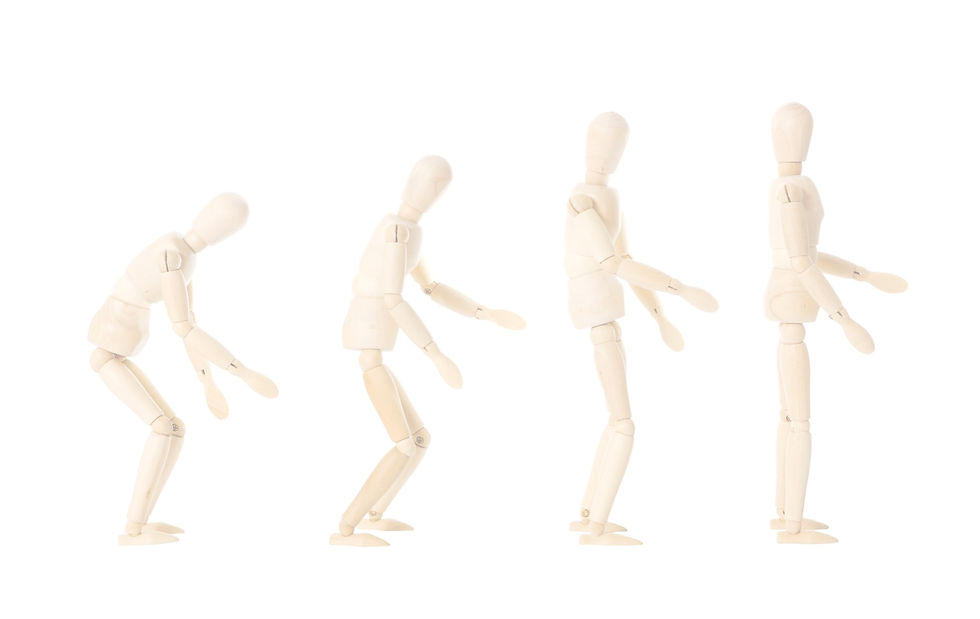
Are there « good » or « bad » posture?
That is the question…
Neither good - Neither bad
In reality…
There are only postures that take a lot more energy to hold over time.
Example…
For a person "leaning" forward, the muscles in the lower back will require a lot more effort, energy not to "fall" forward. When she stays too long in this position (repetitive due to her job, for example), then the pain can appear.
Why do we not talk about a bad posture in that case?
Because the pain comes from a lack of movement, a variety of positions during the day…. and not from "bad posture".
Current problems are often due to a sedentary lifestyle or a lack of physical activity. If there are sufficient muscles in the lumbar spine, then there is no problem getting into this position.
So what to do ?
MOVE: the mobility is the secret.
Regularly vary your positions.
How ?
Avoiding carrying heavy loads
By adapting your workspace
By taking breaks during your day
By securing your abdominal belt
By being aware of your body pattern
Who can help me ?
Fisiotherapist
Osteopath
Occupational therapist
A healthy spine is therefore a column that moves.
What is the place of Low Pressure Fitness then ?
The LPF strengthens the whole body in a postural logic.
Regular practice is required to maintain the beneficial effects (20 to 30 min / day, 2 to 3 times / week).
These are obtained thanks to the sum of the following actions:


